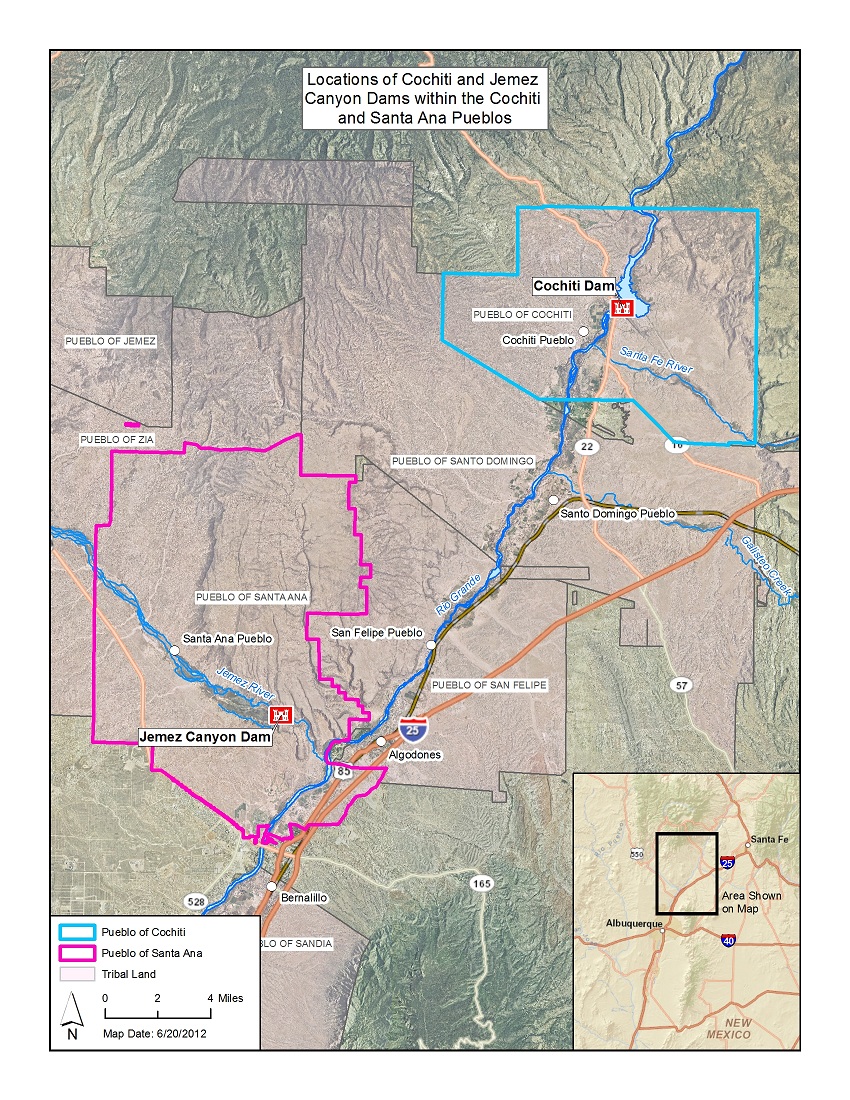There are 565 Federally Recognized Tribes Nationwide. Each Tribe has a unique relationship with the Federal Government that enables flexible problem solving synergy. Albuquerque District, the Pueblo de Cochiti and the Pueblo of Santa Ana have been able to utilize this collaboration at two flood control projects: Cochiti Dam and Jemez Canyon Dam, respectively. Both projects are located entirely or almost entirely within the tribal trust lands of Cochiti and Santa Ana Pueblos. While the Corps maintains easements for project operations, the underlying land is ‘owned’ by the tribes.
This overlapping jurisdiction could, and did, create conflict between the coequal governments. The construction of what were some of the largest flood control facilities in the world, coupled with the inundation of and operational impacts to thousands of acres of tribal land had far reaching impacts to all aspects of tribal society. For almost a half century, both tribes saw confrontation and non-cooperation as their only means of dealing with what they viewed as the unilateral actions of the federal government.
Over the past 20 years, the federal government’s evolving position on issues of tribal sovereignty and self determination has promoted cooperation over conflict, collaboration over competition. At the turn of the century, the southwestern United States entered a period of prolonged drought. Pressures on scarce water resources demanded that the Corps seek more responsive and flexible water resource management principles. These two factors coincided to convince the Corps that a less contentious relationship with the tribes was critical.
For the tribes, the rationale for seeking cooperation was at once intensely emotional and coldly pragmatic. Santa Ana and Cochiti tribal members themselves are the only valid spokespersons on the communal and personal factors promoting cooperation with the federal government. In an increasingly competitive environment, where almost all the actors are bigger with access to greater resources, the advantage of having a powerful federal agency on your side of the table is self evident.
Once initiated the process of collaboration and cooperation was self-reinforcing; developing into a formal partnership for stewardship and other operations and maintenance activities at both projects. Congress recognized the utility federal/tribal partnership in 2007; authorizing the governments use of cooperative agreements to provide resources for tribal assistance in carrying out O&M activities.
